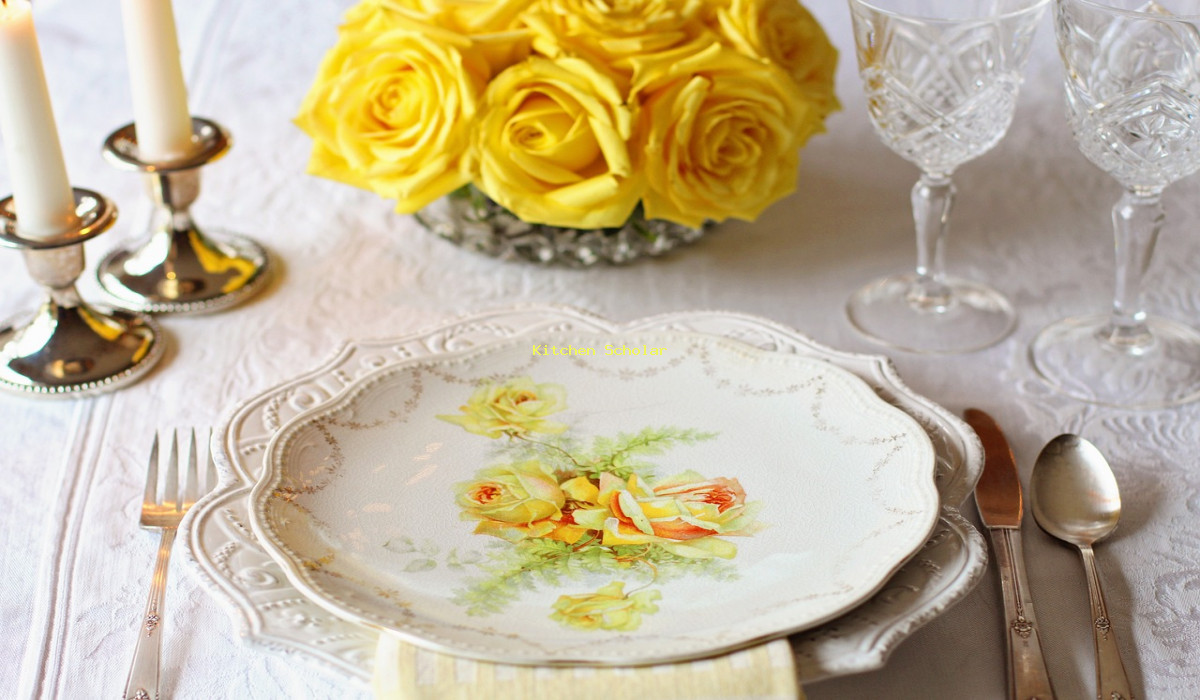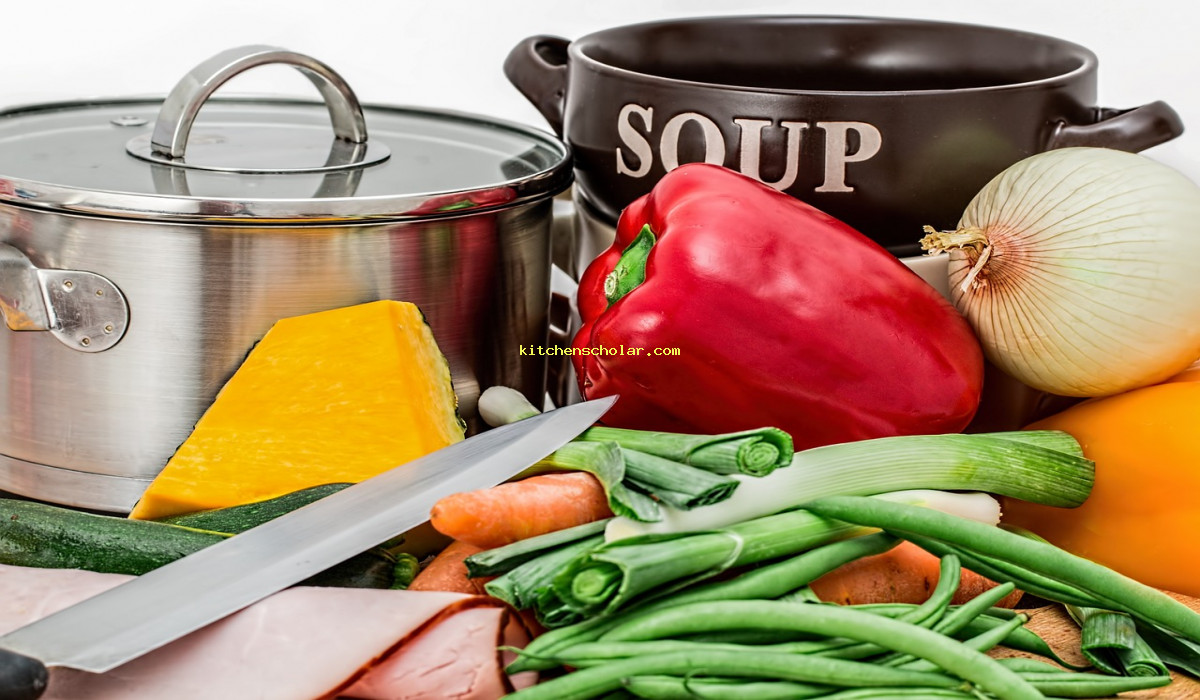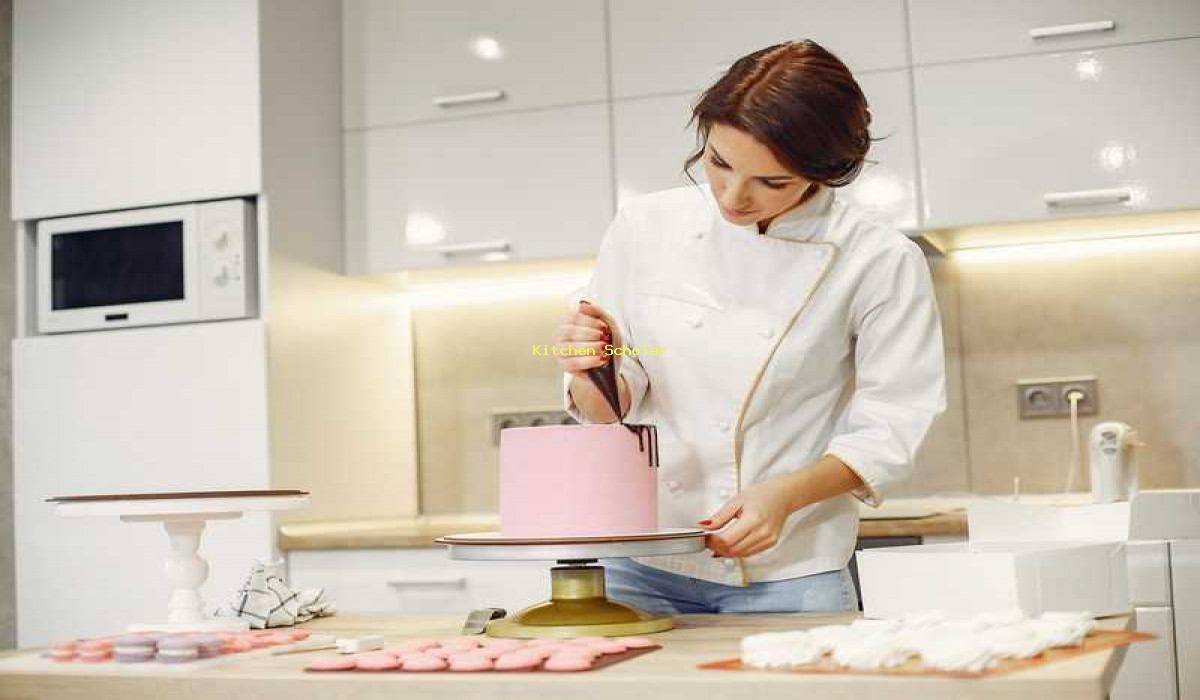Master Your Cooking Skills: 10 Essential Kitchen Vocabulary for Beginners. Discover essential kitchen vocabulary for cooking and baking with ease! From utensils to ingredients, learn the terms you need to know in a practical and conversational way. Never feel lost in the kitchen again – follow our guide to build your culinary vocabulary.
Master Your Cooking Skills: 10 Essential Kitchen Vocabulary for Beginners
Master Your Cooking Skills: 10 Essential Kitchen Vocabulary for Beginners. to know in Master Your Cooking Skills: 10 Essential Kitchen Vocabulary for Beginners
Kitchen Vocabulary: A Comprehensive Guide
Are you struggling to understand kitchen vocabulary? Don’t worry, you are not alone. Cooking can be intimidating, especially for beginners, and understanding common kitchen terms can often be the biggest hurdle.

But don’t let that stop you from whipping up delicious meals in your kitchen. In this in-depth guide, we will cover all the essential kitchen vocabulary you need to know to feel confident in the kitchen.
Basic Kitchen Utensils and Tools
Before we dive into specific cooking terms, let’s start with some basic kitchen utensils and tools that you will come across when exploring a recipe. These tools are essential for any cooking or baking activity, and it’s crucial to know their names and functions.
Spatula or Turner
A spatula, also known as a turner, is a flat and wide utensil used for flipping foods and spreading sauces or icing. It comes in various materials such as silicone, plastic, or metal and has a long handle for easy handling.
Whisk
A whisk is a hand-held tool used for mixing or beating ingredients, usually eggs or batter. It has thin wire loops attached to a handle, allowing you to incorporate air into your mixture, resulting in a smoother and fluffier texture.
Tongs
Tongs are kitchen utensils used for grabbing and handling hot food items while cooking. They consist of two arms and are commonly made of stainless steel or silicone.
Cutting Board
A cutting board is an essential tool for preparing vegetables, meat, and other ingredients. It provides a flat and stable surface for slicing and dicing without damaging your countertop or knives.
Measuring Cups and Spoons
Measuring cups and spoons are used to measure ingredients accurately for cooking and baking. Measuring cups are usually made of plastic or metal, while measuring spoons come in different sizes and are commonly made of stainless steel.
Basic Cooking Techniques
Now that we’ve covered some basic kitchen tools let’s move on to cooking techniques. These are the methods used to prepare food, and learning them will help you follow any recipe with ease.
Sauté
Sautéing is a cooking technique that involves cooking ingredients quickly in a small amount of oil or fat over high heat. It commonly involves tossing or stirring the ingredients in the pan to ensure they cook evenly.
Grilling
Grilling is cooking food over an open flame or heat source, usually on a grill or barbecue. This technique is popular for cooking meats, fish, and vegetables and gives a delicious smoky flavor to the food.
Boiling
Boiling is a cooking technique that involves boiling liquid, usually water or stock, until it reaches a constant bubbling state. It softens or cooks the ingredients and is commonly used for cooking pasta, rice, vegetables, and making soups or stocks.
Baking
Baking is a cooking technique that involves cooking food in an oven, usually at high temperatures. It is commonly used for baking desserts, bread, and other baked goods.
Common Cooking Terms
In this section, we will cover some common cooking terms that you may come across in recipes or cooking shows. Knowing these terms will help you understand the instructions better and follow them accurately.
Al dente
Al dente is an Italian term used to describe pasta or rice that is cooked until it is firm to the bite. This means the pasta or rice retains some texture and is not overcooked.
Baste
Basting is a cooking technique that involves brushing or spooning melted fat, such as butter or oil, over food as it cooks. This helps prevent the food from drying out and adds flavor and moisture.
Debone
Deboning is the process of removing bones from meat or fish. It’s usually done before or after cooking, depending on the recipe.
Julienne
Julienne is a cutting technique that results in long, thin strips of food. To julienne, you cut food into thin, matchstick-like pieces, usually used for vegetables such as carrots or zucchini.
Other Kitchen Terms
In this section, we will cover some miscellaneous terms that will help you understand and navigate your kitchen better.
All-purpose Flour
All-purpose flour is the most commonly used flour and is made from a blend of hard and soft wheat. It’s suitable for most baking needs and can also be used for thickening sauces and gravies.
Convection Oven
A convection oven is an oven with a fan that circulates hot air to cook food evenly and faster. It’s best for baking and roasting and reduces cooking time by up to 25%.
Pan-fry
Pan-frying is a cooking technique similar to sautéing but involves cooking food, usually meat, in a small amount of hot oil or fat without stirring or tossing.
Simmer
Simmering is a cooking technique that involves cooking food in a saucepan over low heat until the liquid reaches a slow and steady bubbling state. This method helps infuse flavor into the food.
Food Storage and Preservation Terms
Understanding food storage and preservation terms is crucial in maintaining food safety and preventing food wastage. In this section, we will cover some common terms related to food storage and preservation.
Flash Freeze
Flash freezing is a method of freezing food items quickly to prevent the formation of large ice crystals, which can result in a mushy texture. It’s commonly used for fruits and vegetables.
Canning
Canning is a food preservation method that involves sealing food items in an airtight jar or can with a vacuum. It extends the shelf life of food, making it last longer without spoiling.
Pickle
Pickling is a food preservation technique that involves immersing food, usually vegetables, in a brine or vinegar solution. This helps preserve the food and gives it a tangy and savory flavor.
Dehydrate
Dehydrating is a process of removing moisture from food, usually by heat or air, to preserve it. It results in a concentrated and dry form of food, making it last longer.
Master Your Cooking Skills: 10 Essential Kitchen Vocabulary for Beginners
Discover essential kitchen vocabulary for cooking and baking with ease! From utensils to ingredients, learn the terms you need to know in a practical and conversational way. Never feel lost in the kitchen again – follow our guide to build your culinary vocabulary.. kitchen Master Your Cooking Skills: 10 Essential Kitchen Vocabulary for Beginners
Understanding Kitchen Vocabulary: A Comprehensive Guide
If you are new to cooking or just looking to brush up on your kitchen lingo, this article is for you. As with any specialized field, there are a lot of words and phrases that are unique to the kitchen. Knowing the ins and outs of kitchen vocabulary is essential for any home cook or professional chef. From the basics of kitchen tools and appliances to more complex food terminology, this guide will cover everything you need to know to navigate the kitchen with confidence.
The Essentials: Basic Kitchen Tools and Appliances
The first step in understanding kitchen vocabulary is to familiarize yourself with the essential tools and appliances found in most kitchens. These are the basic tools that are fundamental to cooking and food preparation.
Some of the most common kitchen tools you’ll encounter include:
- • Knives: The most important tool in any kitchen, knives come in a variety of shapes and sizes, each with a specific purpose. From paring knives to chef’s knives, having a good set of knives is crucial for efficient food prep.
- • Cutting boards: Used to protect countertops while cutting and chopping, cutting boards come in various materials such as wood, plastic, or silicone.
- • Measuring cups and spoons: These essential tools are used for precise measurements in baking and cooking.
- • Kitchen scale: A scale is used to measure ingredients by weight, making it a must-have for any serious baker.
- • Mixing bowls: From whipping up eggs to holding ingredients, mixing bowls are necessary for every kitchen.
- • Can opener: A tool used to open cans, often found in larger kitchens where fresh ingredients may not always be available.
- • Pots and pans: Essential for cooking on the stove or in the oven, pots and pans come in various sizes and materials, such as stainless steel, non-stick, or cast iron.
- • Blender: Used for blending ingredients together to make smoothies, soups, and other recipes.
- • Toaster: Used for toasting bread and other bread-based products.
Cooking Techniques and Methods
Once you have a good grasp of the basic tools, it’s time to delve into the broader world of cooking techniques and methods. Here are some of the most commonly used cooking techniques you should be familiar with:
- • Sauteing: A cooking method where food is cooked over medium heat in a small amount of oil.
- • Boiling: Immersing food in a liquid and cooking it at a high temperature.
- • Grilling: Cooking food over an open flame or hot surface.
- • Baking: Cooking food in an oven using dry heat.
- • Roasting: Similar to baking, but usually refers to cooking larger cuts of meat, poultry, or vegetables.
- • Braising: A cooking method where food is seared then cooked in a small amount of liquid over low heat.
- • Steaming: The process of cooking food over boiling water in a closed container.
- • Broiling: A cooking method where food is cooked close to a heat source.
- • Frying: Cooking food in hot oil or fat.
Food Terminology and Ingredients
Beyond tools and techniques, the world of food is filled with a plethora of different ingredients, flavors, and terms. Here are some of the most common food-related words and ingredients to add to your kitchen vocabulary:
- • Seasonings: Substances used to enhance the flavor of food, such as salt, pepper, and herbs.
- • Spices: Aromatic plant substances used as seasonings.
- • Condiments: Sauces, spreads, or toppings used to add flavor to food.
- • Garnishes: Decorations or toppings added to a dish for visual appeal.
- • Marinades: A liquid mixture of oil, herbs, and spices used to flavor and tenderize meat.
- • Stocks and broths: A flavorful liquid made by cooking meat, vegetables, or bones in water.
- • Bouillon: Dehydrated broth used to make soups and sauces.
- • Mise en place: A French term used to describe the preparation and organization of ingredients before cooking.
- • Emulsify: The process of mixing two liquids, such as oil and vinegar, to create a smooth, creamy texture.
- • Reduce: The process of simmering a liquid to thicken it and intensify its flavor.
Cooking Terms and Phrases
In addition to ingredients, techniques, and tools, there are also loads of cooking terms and phrases that you should be familiar with. Here are some of the most commonly used terms to add to your kitchen vocabulary:
- • Al dente: An Italian term used to describe pasta or vegetables that are cooked until they are firm but not soft.
- • Au gratin: A dish that is topped with grated cheese.
- • Julienne: A technique used to cut vegetables into thin, matchstick-like pieces.
- • Mince: To chop food into very small pieces.
- • Simmer: Cooking food in liquid just below the boiling point.
- • Sear: To quickly cook the surface of food over high heat.
- • Caramelize: The process of cooking sugar until it becomes a golden-brown liquid.
- • Blanching: Briefly cooking food in boiling water then transferring it to ice water to stop the cooking process.
- • Debone: To remove the bones from meat or fish.
- • Deglaze: Adding liquid to a pan to loosen and dissolve cooked bits of food to use as a flavor base for a sauce.
Additional Kitchen Vocabulary to Know
In addition to the essential tools, ingredients, techniques, and terms mentioned above, there are a few other kitchen vocabulary words you should add to your arsenal:
- • Temperature: The degree of hotness or coldness of something, often measured in degrees Fahrenheit or Celsius.
- • Timer: A device used to keep track of time.
- • Oven rack: A removable metal shelf inside an oven used to hold food.
- • Broiler pan: A pan used to broil food in the oven.
- • Cooking spray: A non-stick cooking aid used to grease pans or cooking surfaces.
- • Cookware set: A collection of cooking pots, pans, and other utensils.
- • Recipe: A set of instructions for preparing a particular dish.
- • Cookbook: A book that contains recipes and cooking instructions.
- • Meal prep: The process of preparing multiple meals at once to save time and energy.
- • Leftovers: Food that is leftover from a previous meal and can be eaten later.
Putting Your Kitchen Vocabulary to Good Use
Now that you have a broad understanding of common kitchen vocabulary, it’s time to put your knowledge to good use. Using proper kitchen terminology is not only important for communication with other cooks, but it also allows you to better understand recipes and cooking techniques.
By knowing the right terms and phrases, you can impress friends and family with your cooking know-how and confidently navigate your way through any recipe. So next time you’re in the kitchen, put your new vocabulary to use and see how it takes your cooking skills to the next level.
10 Essential Kitchen Vocabulary for Beginners
Now that you’ve reached the end of this comprehensive guide to kitchen vocabulary, you should have a solid understanding of the most commonly used words and phrases in the world of food and cooking. From basic tools and techniques to more complex terminology and ingredients, you now have the knowledge to confidently navigate the kitchen and elevate your cooking game.
Remember, practice makes perfect, so don’t be afraid to incorporate these terms into your everyday cooking and continue to expand your kitchen vocabulary as you experiment with new recipes and techniques. Happy cooking! Master Your Cooking Skills: 10 Essential Kitchen Vocabulary for Beginners

Master Your Cooking Skills: 10 Essential Kitchen Vocabulary for Beginners
What are some common kitchen tools and utensils?
For cooking and preparing food, some common kitchen tools and utensils include knives, cutting boards, measuring cups and spoons, mixing bowls, and pots and pans.
What are some common types of kitchen appliances?
Some common types of kitchen appliances include refrigerators, stoves, ovens, microwaves, toasters, and blenders.
What are some basic cooking techniques?
Some basic cooking techniques include sautéing, boiling, roasting, grilling, and baking.
What are some common cooking measurements and equivalents?
Some common cooking measurements and equivalents include teaspoons, tablespoons, cups, fluid ounces, and pounds.
What are some safety tips for working in the kitchen?
Some safety tips for working in the kitchen include always washing your hands before handling food, using caution when using knives and other sharp utensils, and being mindful of hot surfaces and appliances.
What are some essential ingredients to have in a well-stocked kitchen pantry?
Some essential ingredients to have in a well-stocked kitchen pantry include flour, sugar, salt, pepper, cooking oil, canned goods, and various spices and herbs.
What are some common cooking terms and their definitions?
Some common cooking terms and their definitions include simmering (cooking food in liquid that is just below boiling point), mincing (chopping food into small, fine pieces), and marinating (soaking food in a mixture of liquids and spices for enhanced flavor).
What are some tips for keeping a clean and organized kitchen?
Some tips for keeping a clean and organized kitchen include wiping down surfaces after cooking, regularly cleaning out the fridge and pantry, and using storage containers to keep food organized.
What are some ways to add flavor to dishes?
Some ways to add flavor to dishes include using herbs and spices, experimenting with different cooking techniques, and incorporating sauces and marinades into recipes.
What are some common mistakes to avoid in the kitchen?
Some common mistakes to avoid in the kitchen include not properly seasoning food, overcooking or undercooking food, and not following recipes accurately. Master Your Cooking Skills: 10 Essential Kitchen Vocabulary for Beginners

